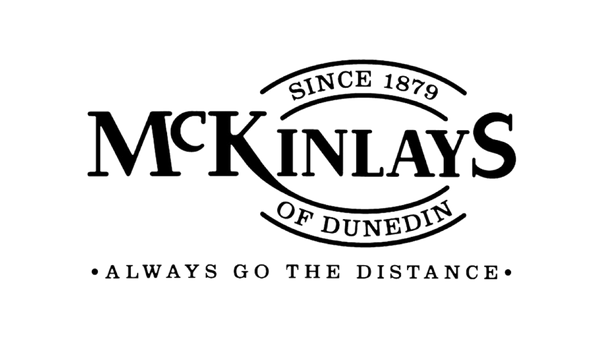About McKinlays Footwear

5th Generation McKinlays
McKinlays Footwear has been making shoes since 1879, as you can imagine, we’ve seen a few changes since then.
However, even though tastes and styles have moved on (some would say come full circle) one thing has remained the same: high quality footwear, made to last, has always attracted discerning buyers.
We believe this focus on quality, traditional techniques and philosophies, and the continuity of experienced staff, allows us not only to offer you a superior product, but a higher level of service and support. We look forward to talking with you soon.
Meet The Team
-

Graeme McKinlay
Read More About GraemeFrom my early days working in the factory during school holidays, the family business felt like a natural progression. I’m deeply passionate about shoemaking, and there’s nothing more satisfying than seeing the finished shoes, knowing the craftsmanship that went into each pair.
-

David McKinlay
Read More About DavidAfter a global adventure and becoming a motor mechanic, returning home led me to the family’s shoemaking legacy. Now, 34 years later, I’m captivated daily by the intricate art of shoemaking, especially the problem-solving aspect and witnessing the culmination of our hard work.
McKinlays Footwear Making Process
To make one pair of shoes, it takes 88 steps! Read about McKinlays Footwear process below.
-
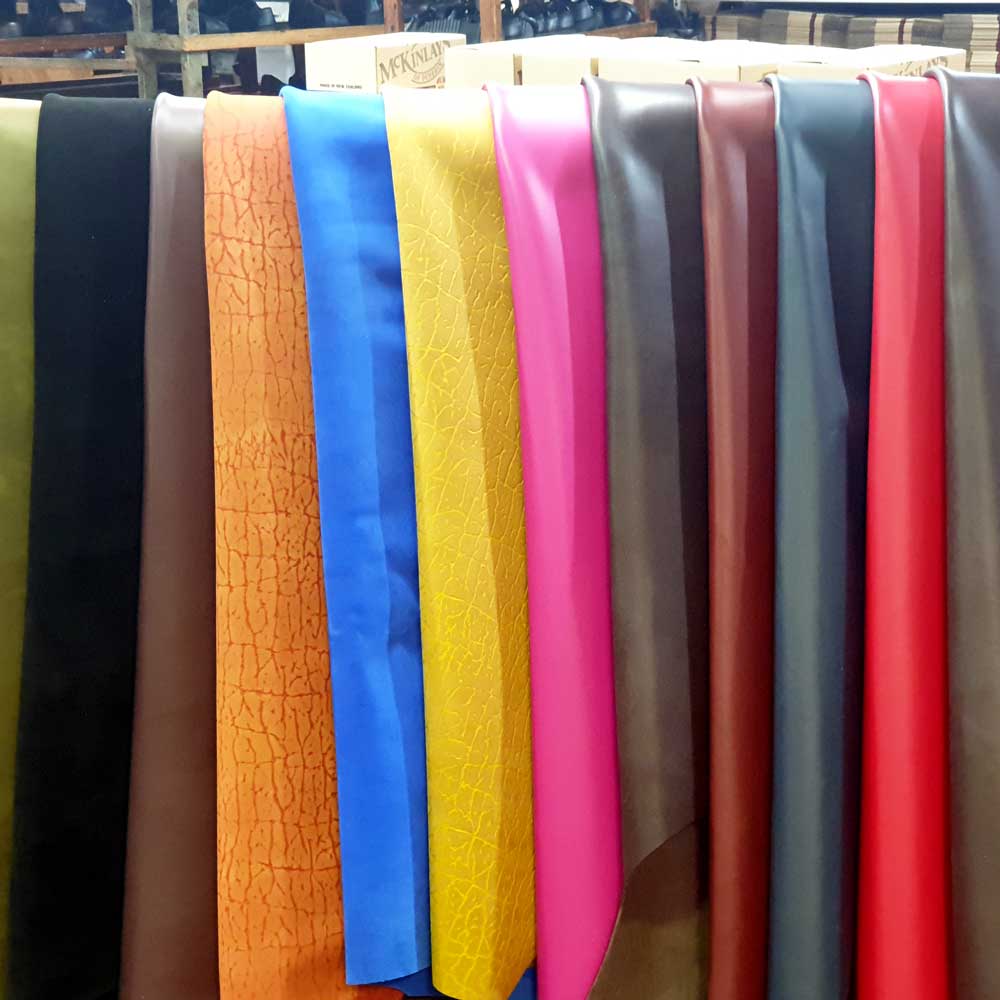
1. Leather Selection:
McKinlays sources high-quality leather for their shoes. The leather is chosen based on its durability, flexibility, and aesthetic appeal. Nearly all our leather is sourced from within New Zealand from Tasman Tanning in Whanganui. The leather is predominately cowhide & arrives at the factory tanned & died to our requirements.
-
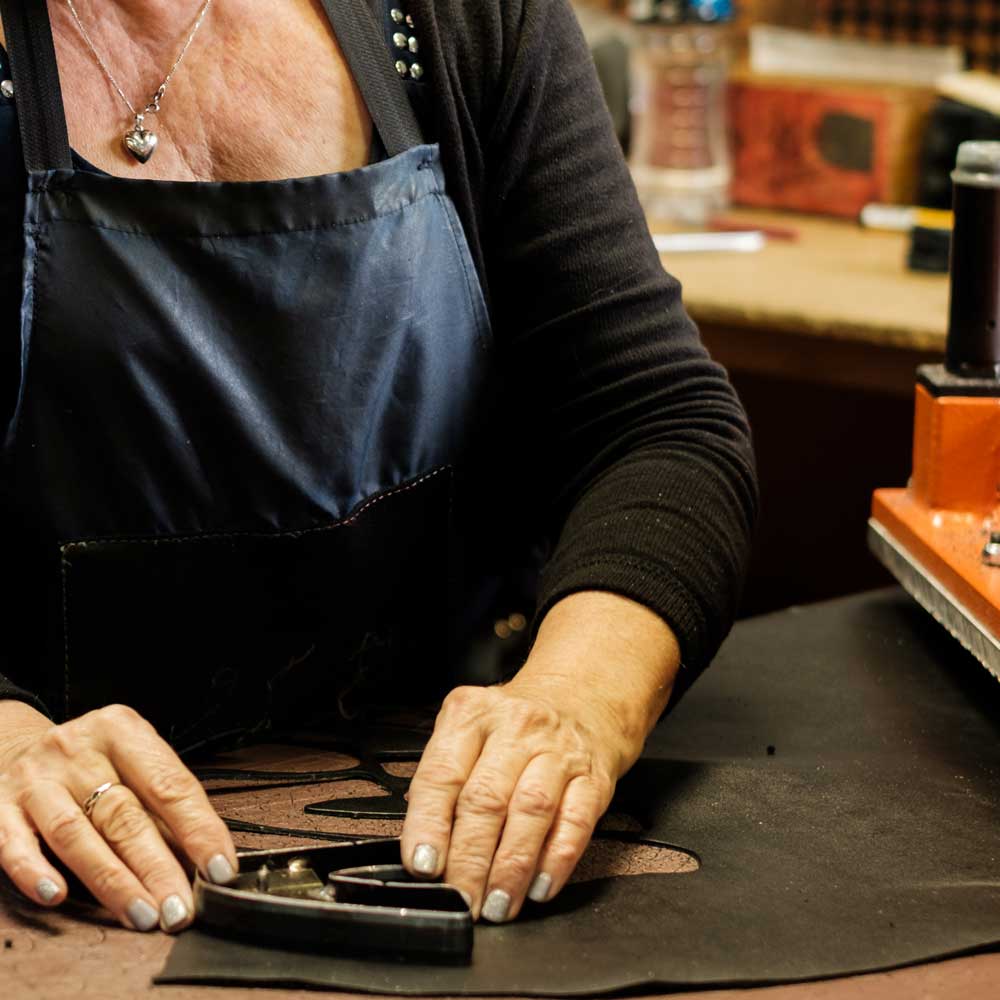
2. Cutting The Leather:
Once the leather is selected, the team at McKinlays cut the leather using cutting dies that are punched through the hides. We carefully plan the cuts to ensure that the leather pieces are used in the most efficient way possible. Certain parts of the side of leather are used for specific parts of the shoe, such as the stronger bits for the toe and heel. Attention to avoiding any scars & marks on the sides ensures a clean look on the finished footwear.
-
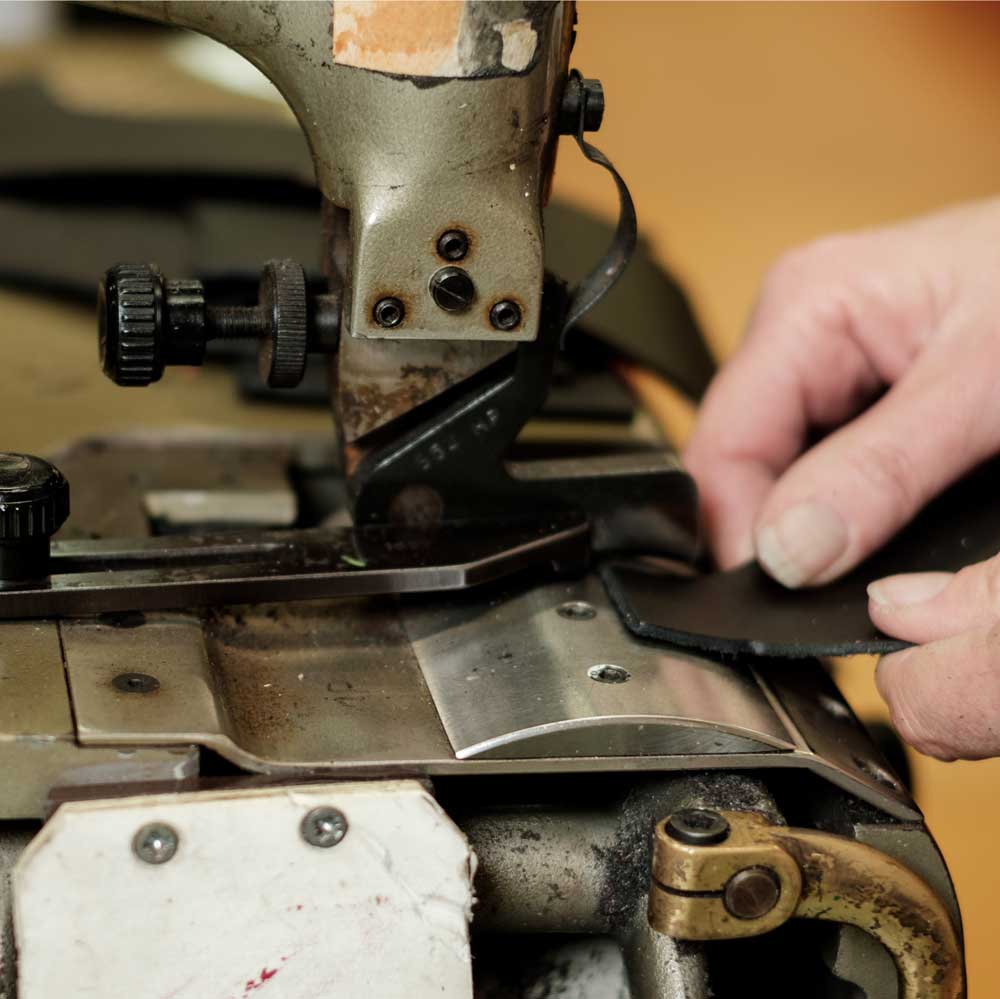
3. Skiving & Stitching
After the leather is cut, we use a process called skiving to thin out certain parts of the leather, such as the edges, to ensure a clean finish. The pieces of leather are then stitched together using a heavy-duty polyester or nylon thread and an industrial sewing machine. Reinforcing around toes & heels is added along with eyelets for laces or buckles depending on the style.
-
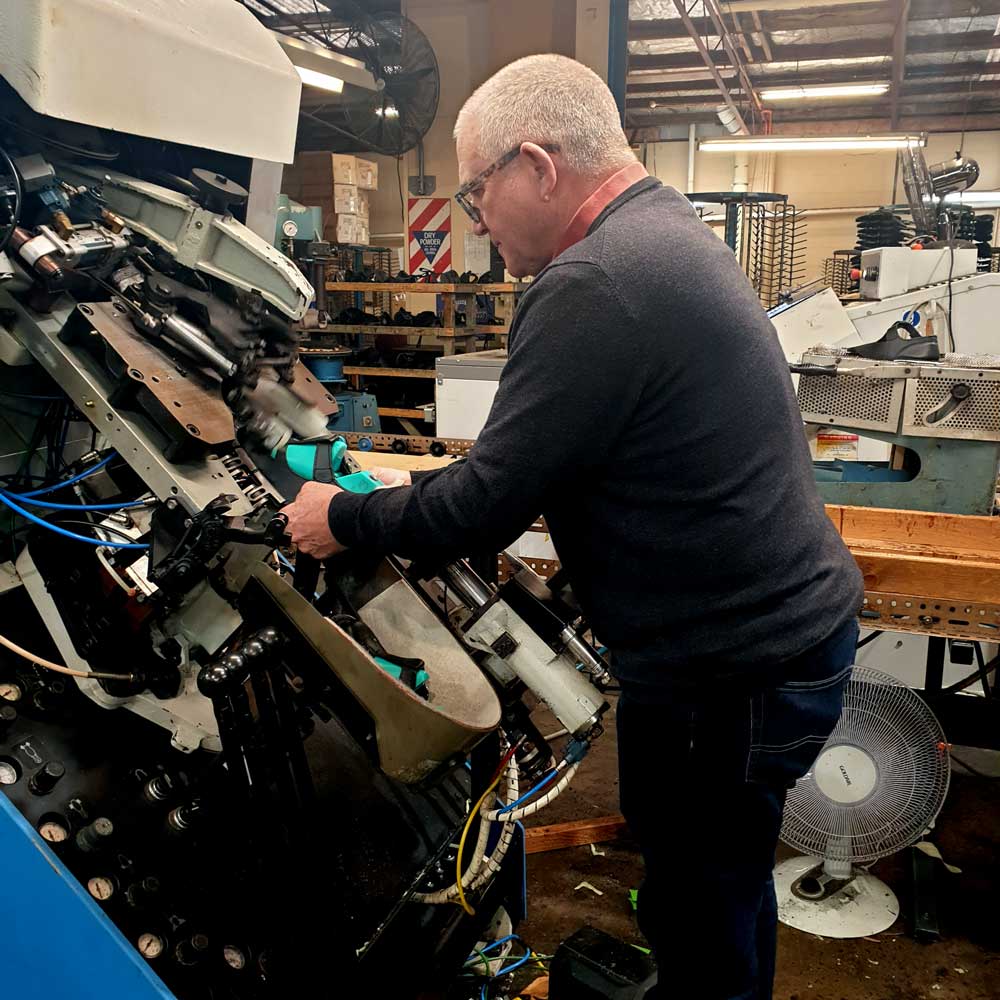
4. Lasting:
Once the leather pieces are stitched together, they are stretched and pulled over a foot-shaped mould called a last & attached to a mid sole. The leather is then shaped around the last to form the shape of the shoe. The shoe upper is then stitched to the midsole providing a strong flexible shoe.
-
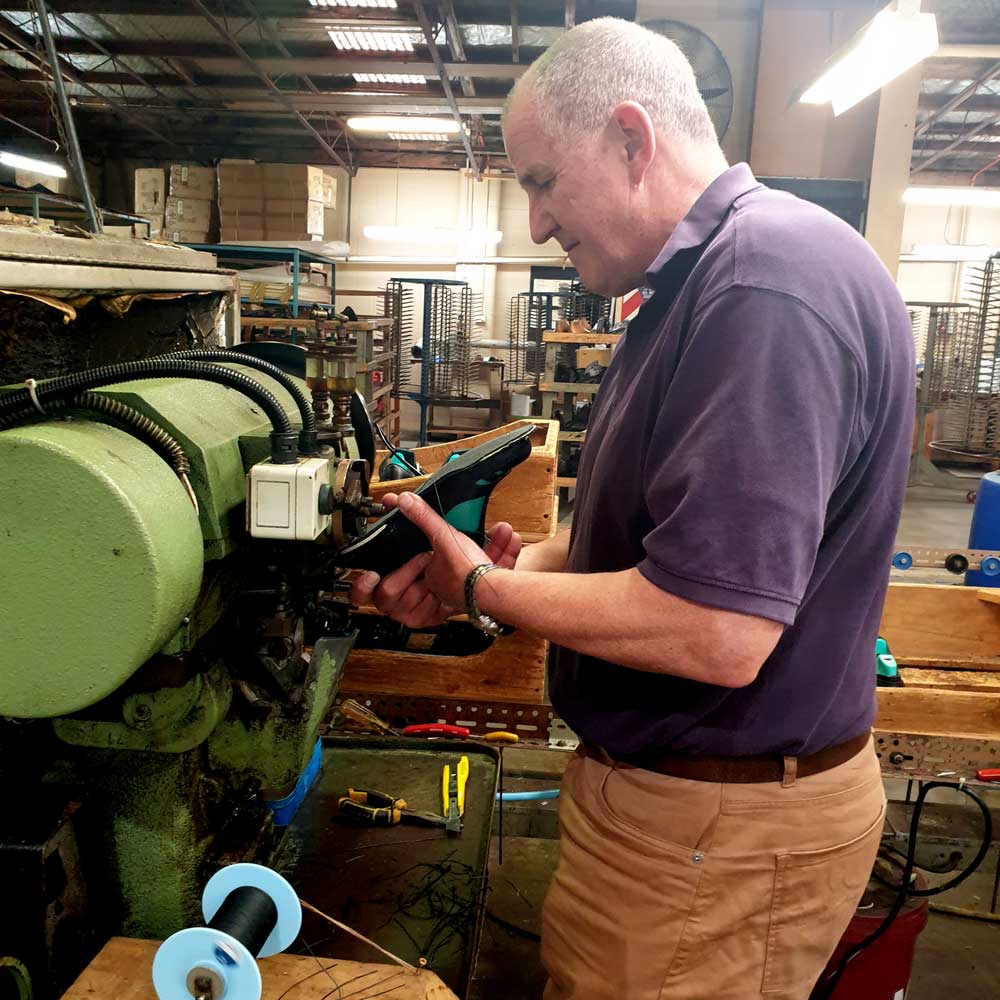
5. Sole Attachment:
The soles are then attached to the shoes and the mid sole is stitched to the upper. McKinlays Footwear uses a variety of different soles made from either nitrile rubber or PVC. These are made for us to our specifications by Rubber Developments in Christchurch. The sole units are attached using a high strength polyurethane contact adhesive.
-
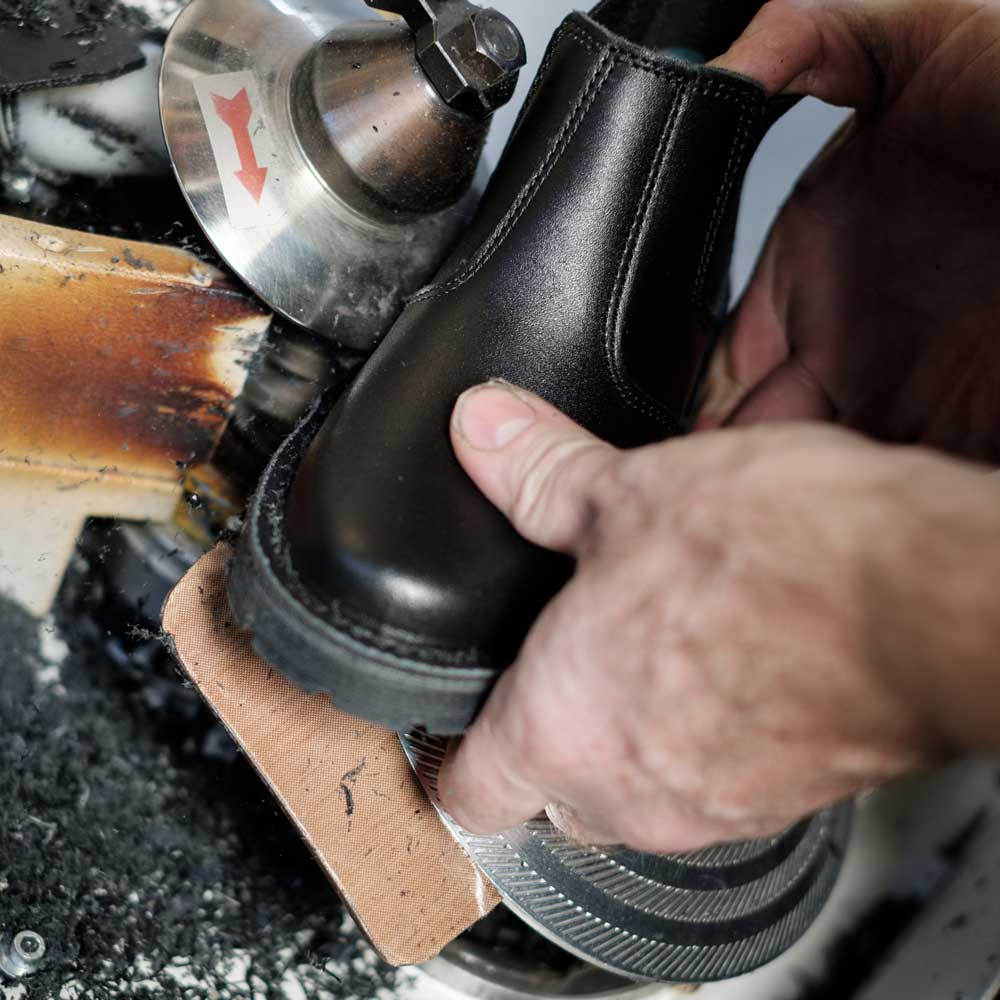
6. Trimming Edges:
The edge of the shoes is then trimmed to remove surplus material and then finished by hand. We carefully inspect the shoes for any imperfections and make any necessary touch-ups.
-
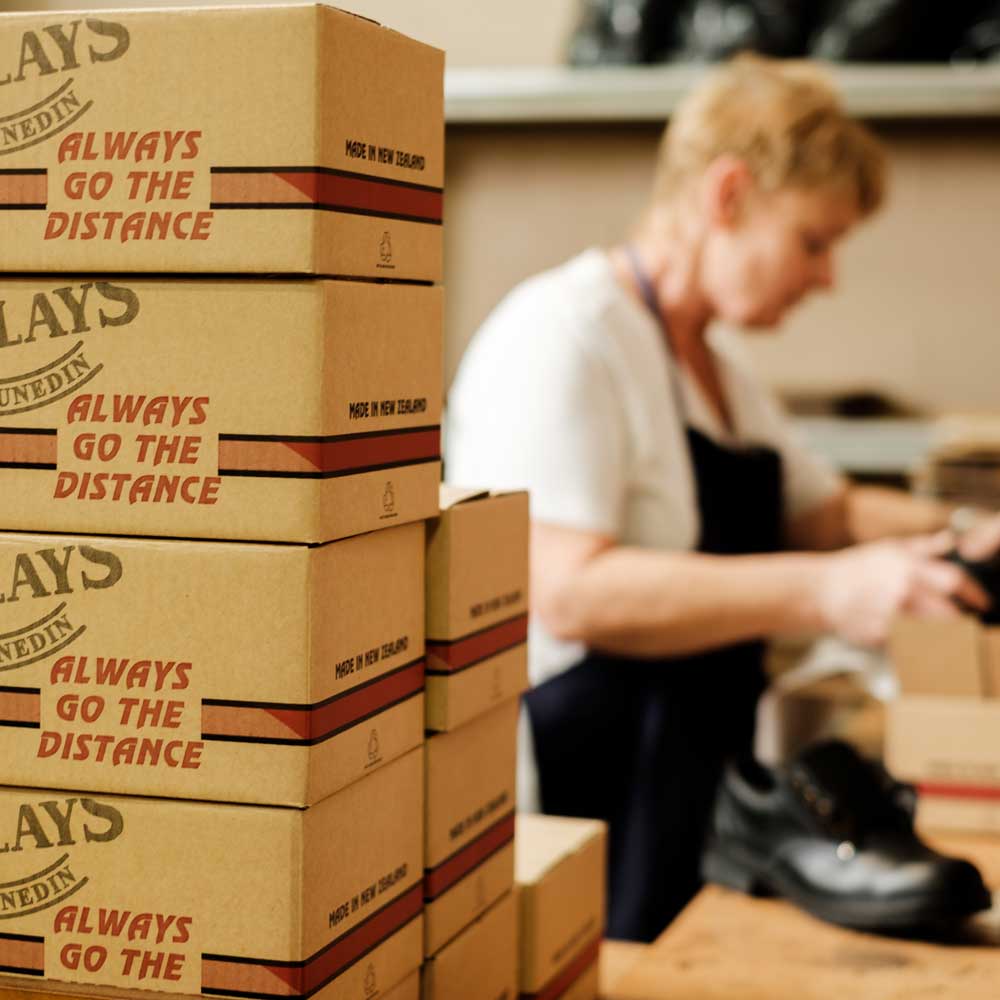
7. Packaging & Shipping:
Finally, the shoes are boxed up and sent to the customer. McKinlays Footwear takes great care to ensure that the shoes are packaged securely to prevent any damage during shipping.
-
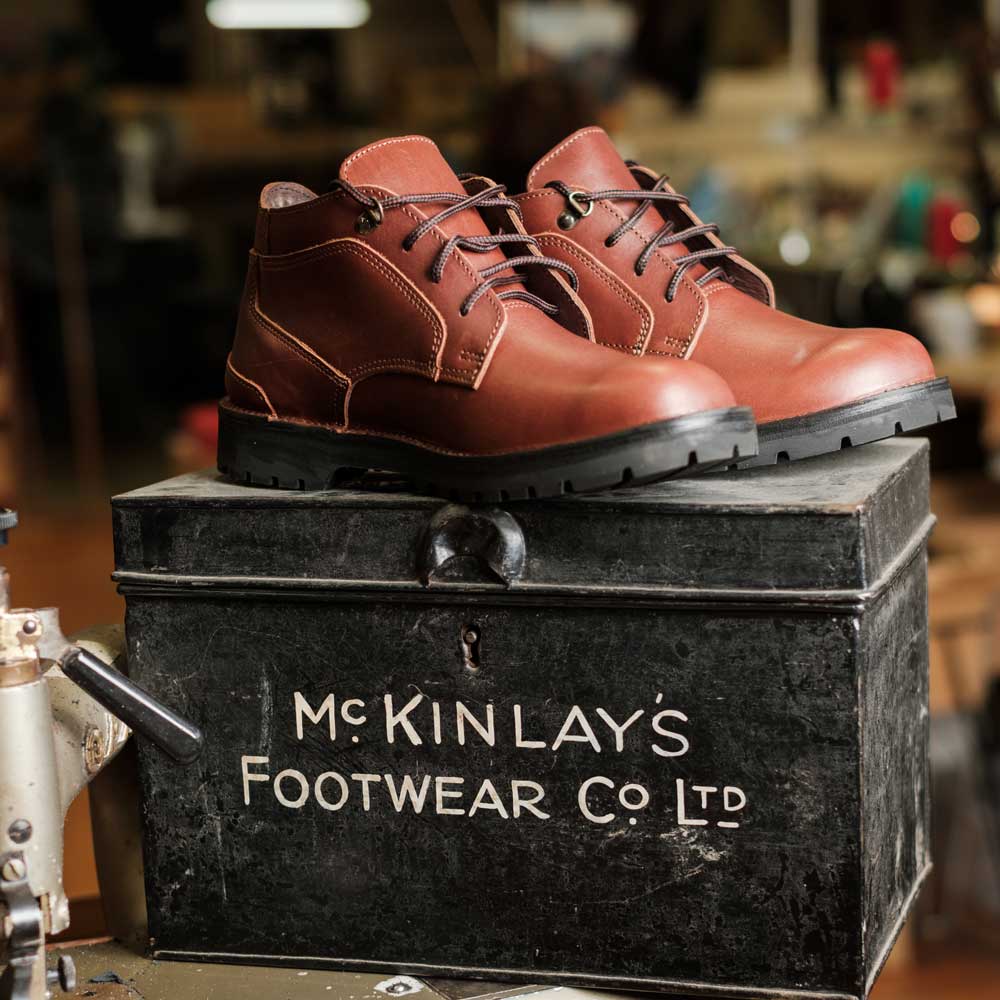
8. And That's It!
McKinlays Footwear’s handmade shoe production process is a labour-intensive and time-consuming process (every shoe is held and inspected by a person at least 40 times), but it results in high-quality, durable shoes that customers can enjoy for years to come.
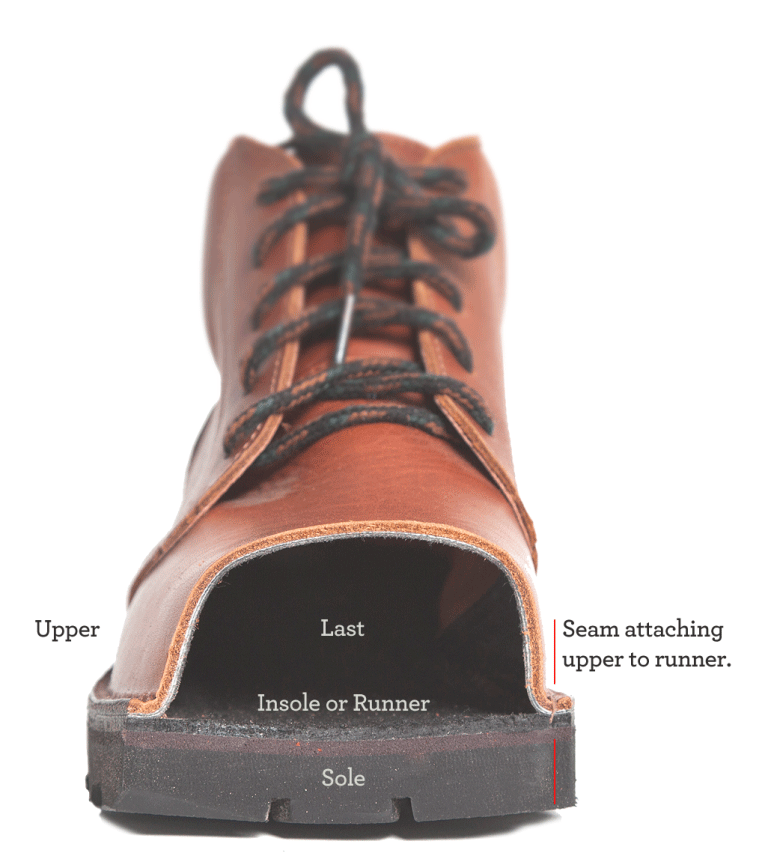
The "Veldtschoen" Stitchdown Method
This is the only one construction where the lasting allowance is turned outwards. The insole is larger than the last. The upper outside curved edge is cement lasted to the insole. In some cases a thin micro cellular mid sole is also temporarily cemented with the insole. The sole itself is also cemented and all the elements are bound together by stitching. The excess material from the side is cut before trimming.
The History of McKinlays
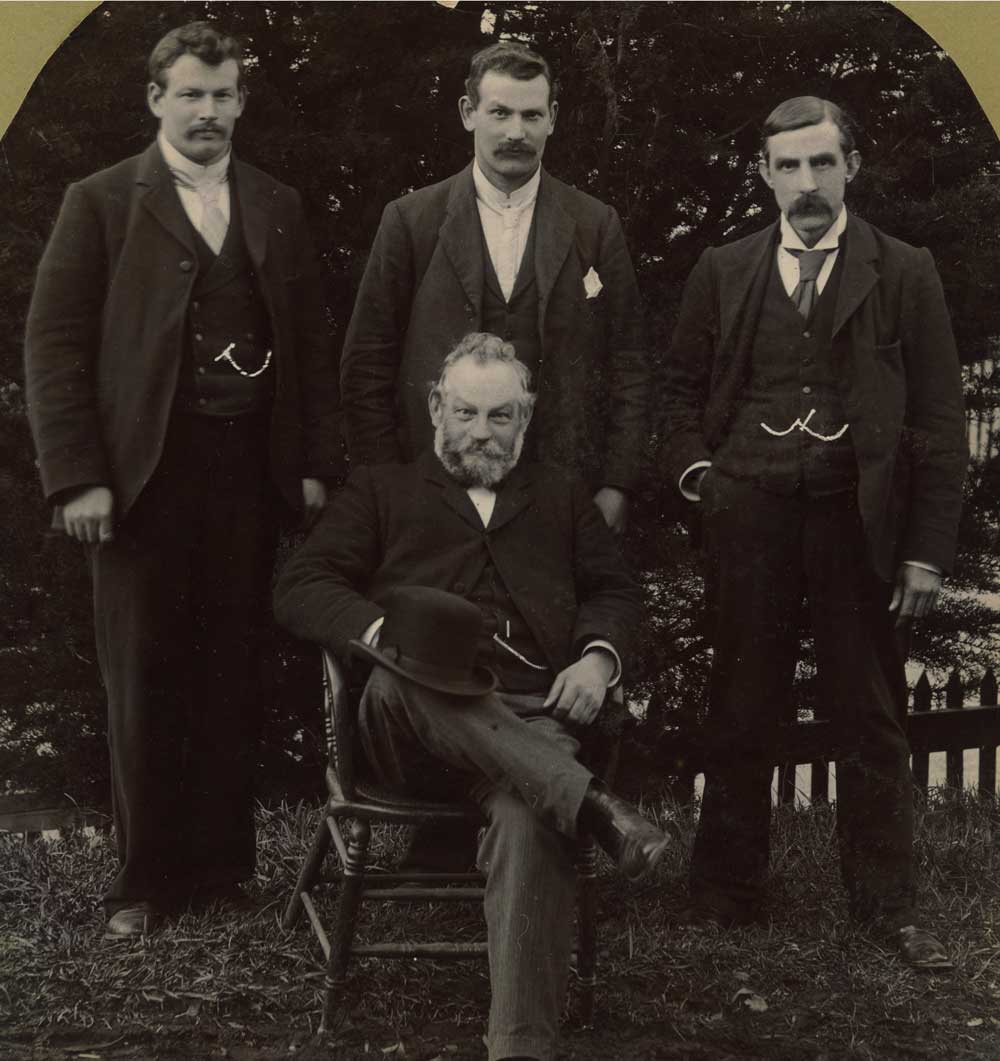
1873
The history of McKinlays involvement in the footwear industry started in 1873 when Robert McKinlay arrived on the clipper ship Euterpe after a 4-month voyage from Scotland.
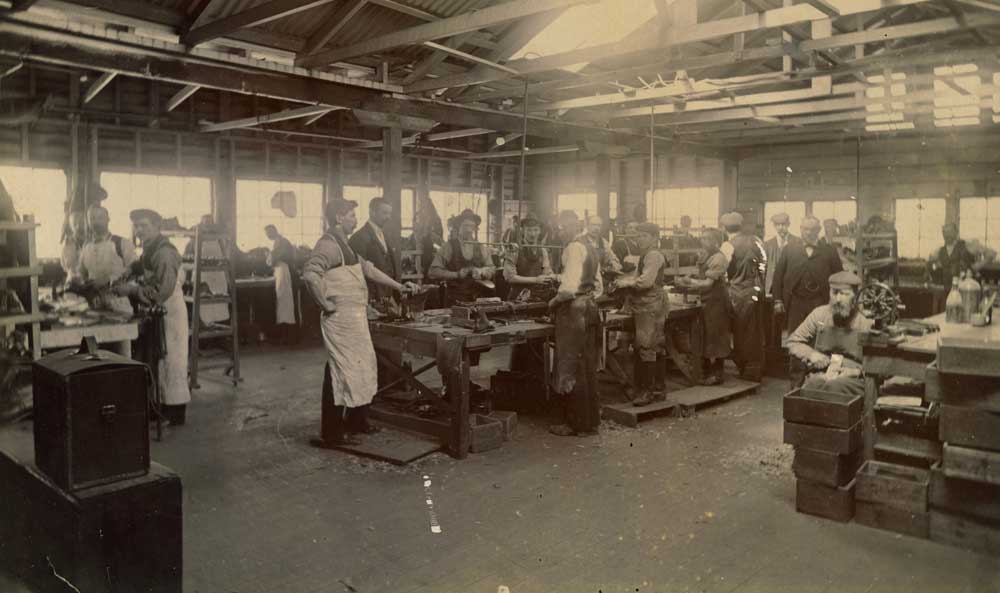
1879
Robert McKinlay quickly found work with A&T Inglis as a boot maker. When they ceased work in 1879 he purchased some of the plant and started manufacturing on his own account. Initially working from his scullery at home in what was then called Hillside. After two years he was placed in charge of Sargood Son & Ewen and his staff at the time all went with him.
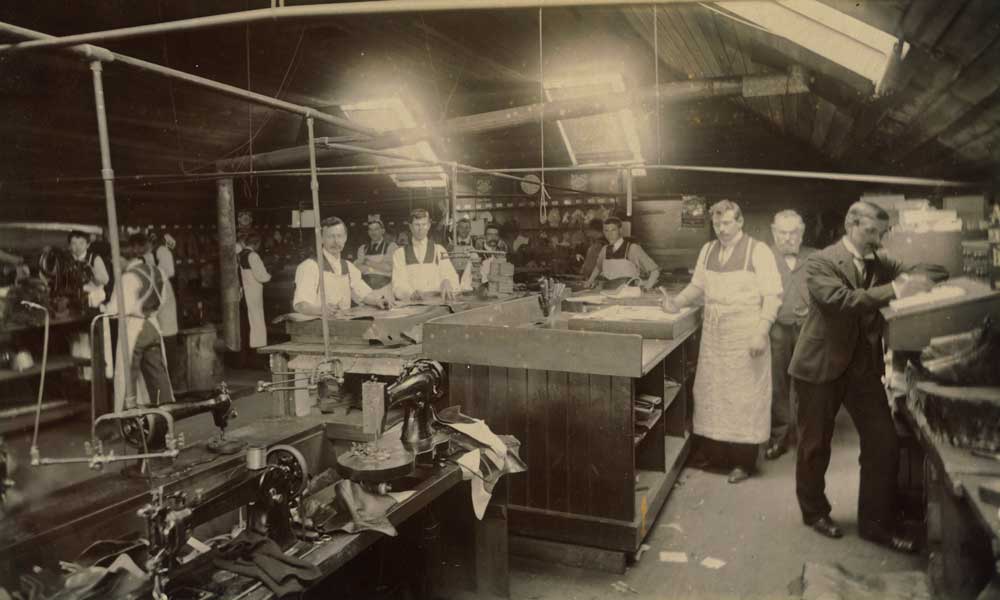
1885
In 1885 Robert again started in his old premises with about twenty staff. The business grew and large additions were made to the building so that by 1890 a total of 140 hands were employed. Family legend has it that part of the extensions was the dining hall from the South Sea Exhibition held in Dunedin in 1889.
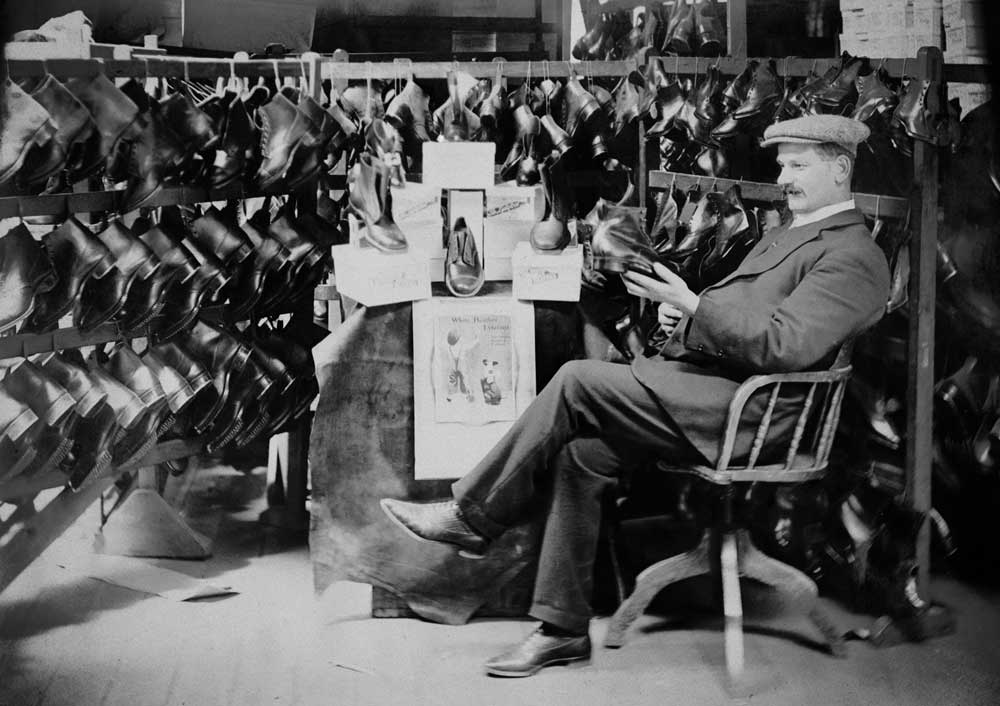
1907
By the time of his death in 1907, his sons Walter and William were both involved in the business. They then ran the business until the early 1930s when the business was put into receivership, after this the assets of the business were bought by William’s sons, Norman and Hugh.
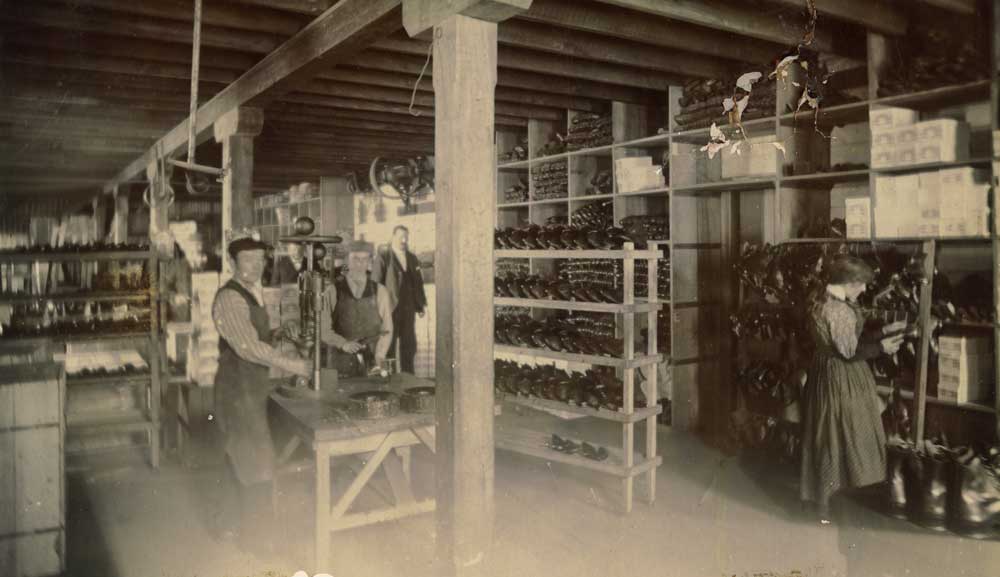
1930s
The factory was then moved to Filleul Street, where it remained until 1989. Over the next few decades, the factory produced a range of footwear from heavy work boots to slippers.
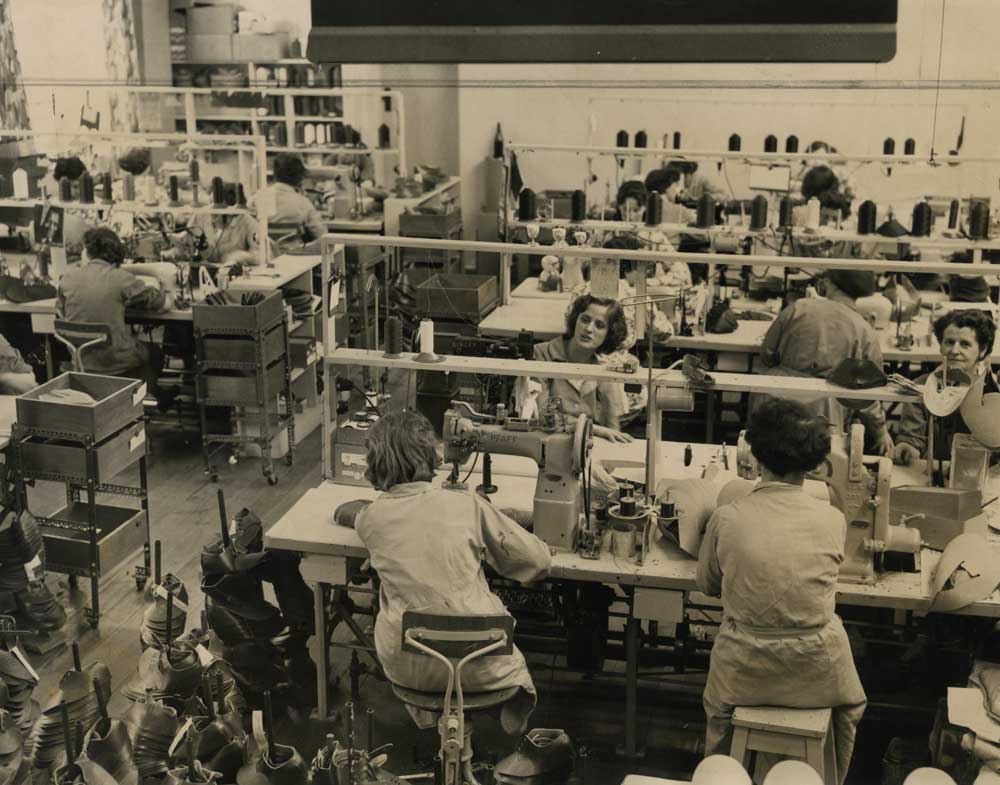
1960s
In the early 1960s, Hugh sold his share of the business to Norman’s oldest son William (Bill) who was then joined by his brother Nigel in 1970. By this time, the factory was solely making “veldtschoen” stitch down footwear for which it is renowned today.
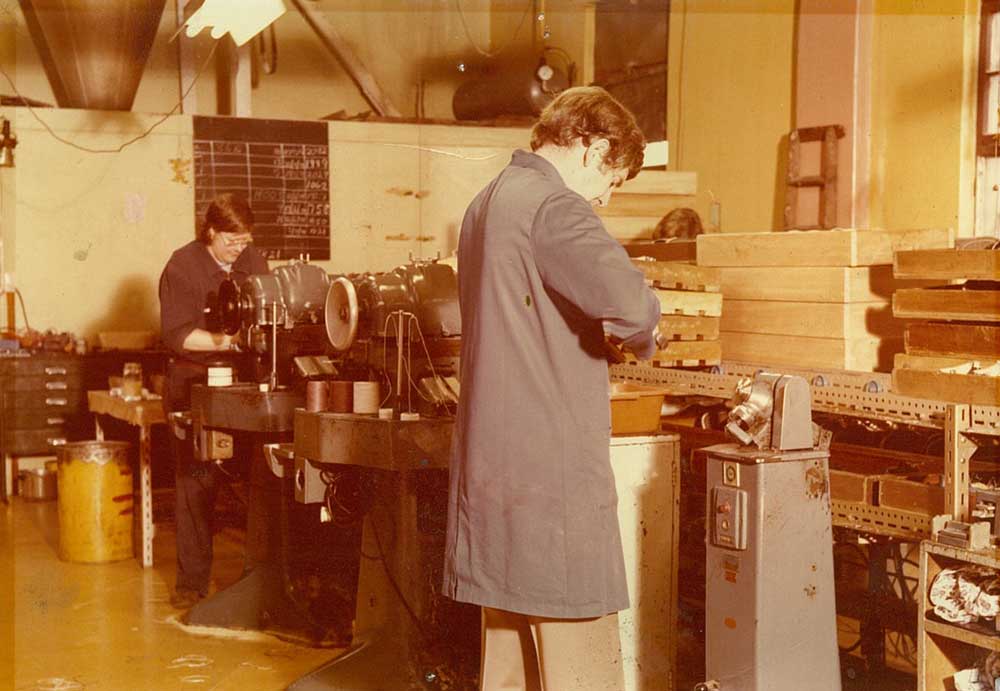
1980
By 1980, Bill’s oldest son Graeme was in the business followed by his brother David in 1988.
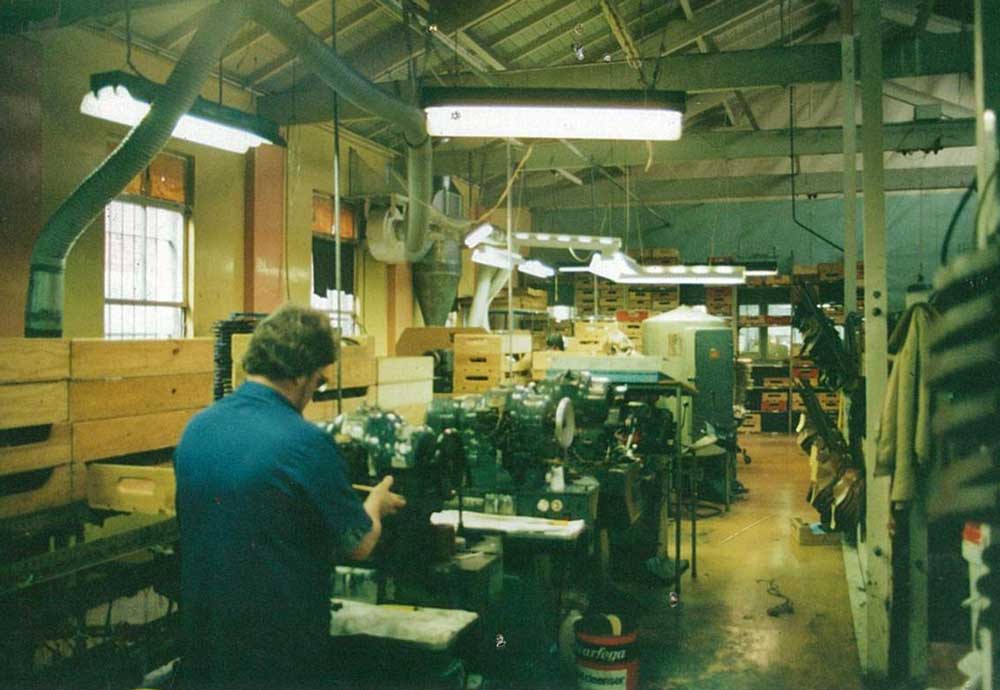
1990
The factory moved again in 1990 to its current site in Glasgow Street, South Dunedin. In the late 1990s Bill retired but has kept an active interest in the business over the ensuing years. Nigel then left in 2005 and moved to Bannockburn to grow grapes and serve on the regional council.
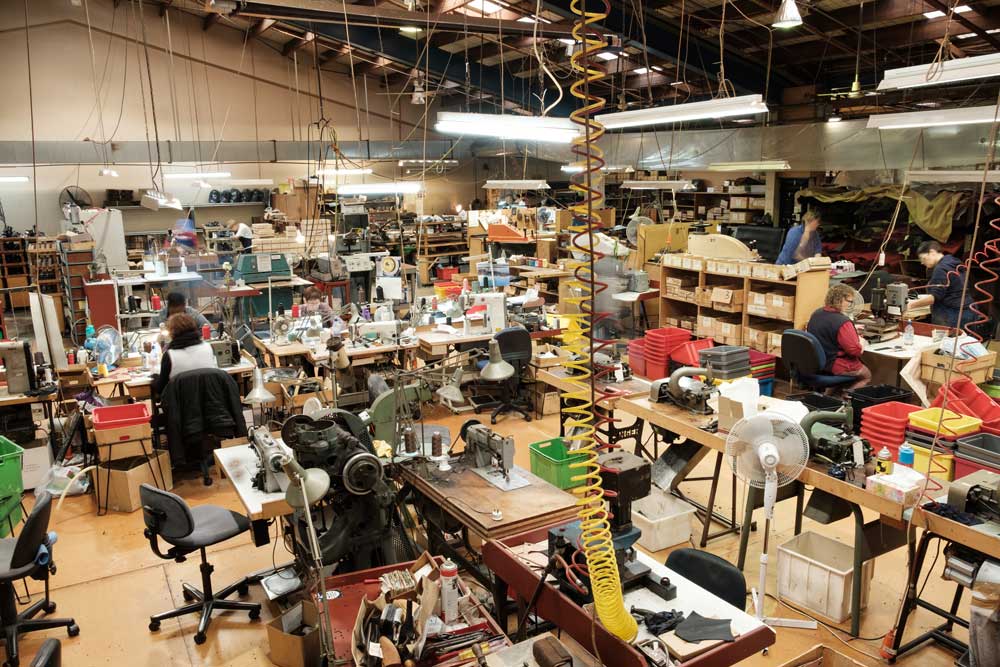
Present
Graeme and David are both still working full time in the factory doing everything from working machinery to training, to hitting the road and selling to our customers around New Zealand.
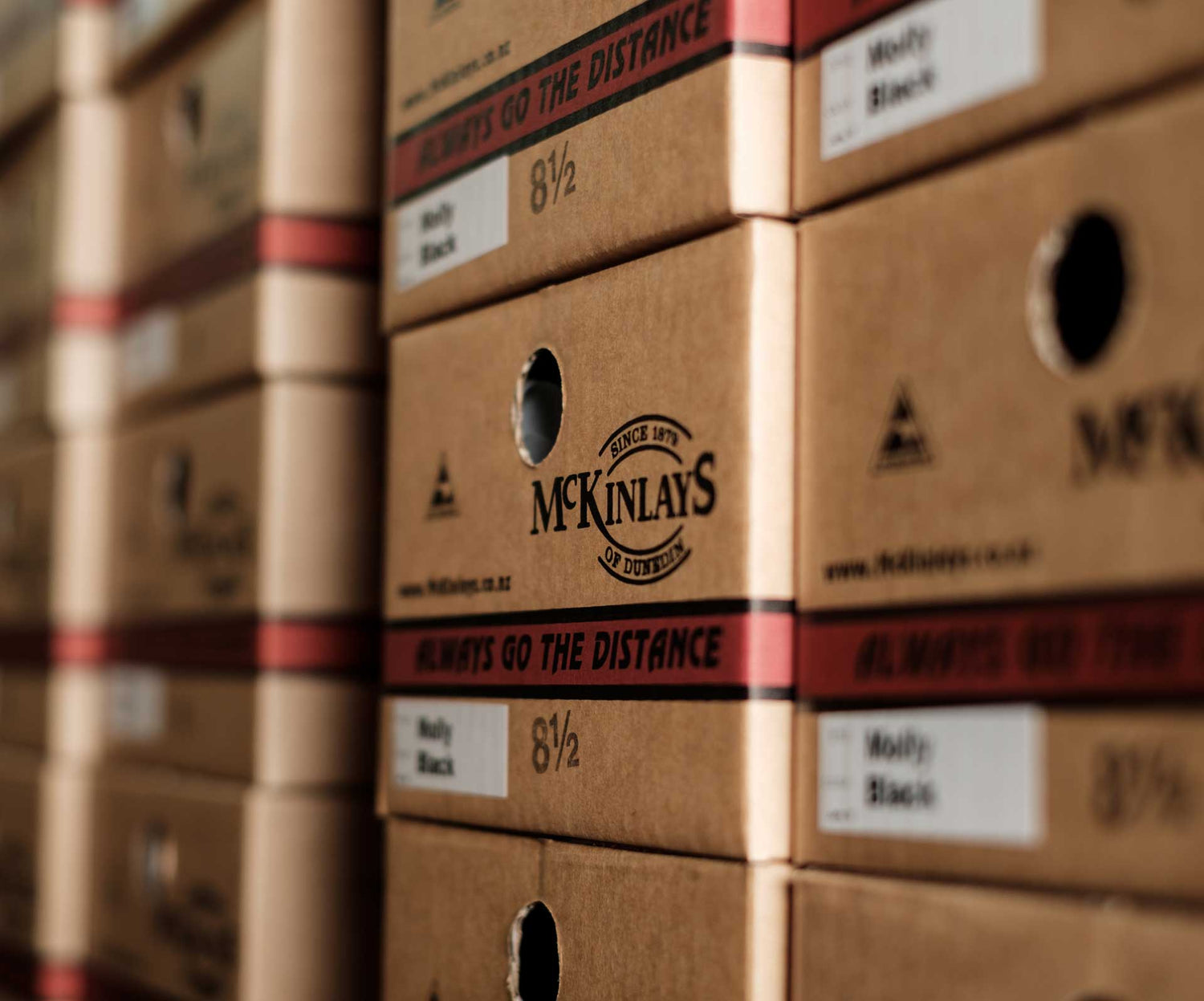
100% Satisfaction Guaranteed
It’s simple. We guarantee the quality and workmanship of our shoes. If you aren’t 100% satisfied with this, we’ll do whatever it takes to make it right. Because at McKinlays, we stand by a reputation built since 1879 of offering you not only a superior product, but a higher level of service and support. You can relax knowing that we’ll accept nothing short of your complete satisfaction.
View Our Products or Request Custom Footwear
Browse our selection of products or request your own custom pair to experience the perfect fit!
